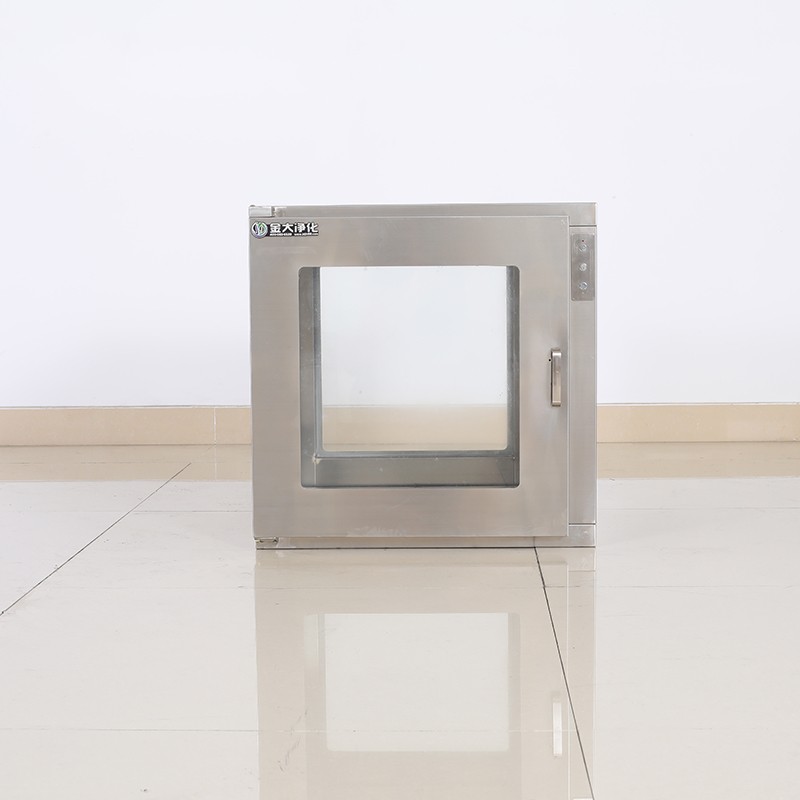
- English
- Español
- Português
- русский
- Français
- 日本語
- Deutsch
- tiếng Việt
- Italiano
- Nederlands
- ภาษาไทย
- Polski
- 한국어
- Svenska
- magyar
- Malay
- বাংলা ভাষার
- Dansk
- Suomi
- हिन्दी
- Pilipino
- Türkçe
- Gaeilge
- العربية
- Indonesia
- Norsk
- تمل
- český
- ελληνικά
- український
- Javanese
- فارسی
- தமிழ்
- తెలుగు
- नेपाली
- Burmese
- български
- ລາວ
- Latine
- Қазақша
- Euskal
- Azərbaycan
- Slovenský jazyk
- Македонски
- Lietuvos
- Eesti Keel
- Română
- Slovenski
- मराठी
- Srpski језик
Can Pass Boxes Be Integrated with Other Cleanroom Equipment?
2024-10-09

How does a Pass Box work?
A Pass Box works by using the interlocking mechanism mentioned earlier. When an item is placed into the Pass Box on one side, the door closes and an air shower system is activated, which cleans the item of any impurities using HEPA filters before it is transferred into the cleanroom. This process ensures that the cleanroom remains free from any unwanted particles that may have been present on the item before it entered the controlled environment.What is the material used to make a Pass Box?
A Pass Box can be made from stainless steel or galvanized steel. Stainless steel is used in cleanrooms where high durability and resistance to corrosion are required. Galvanized steel is used in areas where corrosion is not of high concern, and the cost is an important factor as it is less expensive than stainless steel.Can a Pass Box be integrated with other cleanroom equipment?
Yes, a Pass Box can be integrated with other cleanroom equipment. For instance, it can be integrated with an air shower system that cleans any particles off the item before it enters the cleanroom. It can also be integrated with a material transfer system that transports items into the cleanroom quickly and safely.Conclusion
Pass Boxes are essential equipment in cleanrooms that ensure controlled environments are maintained free from contamination. They come in different sizes and materials such as stainless steel or galvanized steel. They have an interlocking mechanism that ensures only one door can be opened at a time, thereby minimizing air disturbance in the cleanroom. Pass Boxes can also be integrated with other cleanroom equipment such as air showers and material transport systems, making them more effective and efficient. Suzhou Jinda Purification Engineering Equipment Co., Ltd. is a reputable company that specializes in cleanroom solutions. They offer high-quality Pass Boxes that can be customized to suit various cleanroom applications. For more information, visit their website at https://www.jdpurification.com or contact them via email at 1678182210@qq.com.Research Papers on Pass Box
1. Lu, X. et al. (2019). The Application of Pass Box in Cleanroom. Science and Technology Innovation Herald, 16(2), 24-27.
2. Yang, J. et al. (2017). Design and Implementation of a Pass Box for Cleanroom. Environmental Science and Pollution Research, 24(19), 16054-16061.
3. Liu, Y. et al. (2016). The Effect of Pass Box on the Cleanliness of Cleanroom. Journal of Cleanroom Technology, 25(1), 56-59.
4. Zhang, M. et al. (2015). Optimization of Pass Box Design based on Airflow Simulation. Journal of Mechanical Engineering, 51(6), 47-53.
5. Li, Y. et al. (2014). Performance Evaluation of Pass Box in Cleanroom. Journal of Air Conditioning and Refrigeration, 7(3), 165-168.
6. Wang, Q. et al. (2013). The Influence of Pass Box on the Distribution of Air Velocity in Cleanroom. Journal of Environmental Engineering Technology, 3(1), 24-27.
7. Chen, L. et al. (2012). Research on the Control of Particle Pollution in Cleanroom by Pass Box. Procedia Engineering, 45, 638-642.
8. Xu, C. et al. (2011). Experimental Study on the Heat Loss in Pass Box during Material Transfer. Journal of Cleanroom Technology, 20(4), 7-12.
9. Peng, Z. et al. (2010). Influence of Pass Box on Temperature and Humidity Distribution in Cleanroom. Journal of Building Energy and Environment, 1(2), 85-89.
10. Wang, H. et al. (2009). Optimization of Pass Box Design based on Computational Fluid Dynamics. Journal of Mechanical Design and Manufacturing, 3(1), 23-26.



